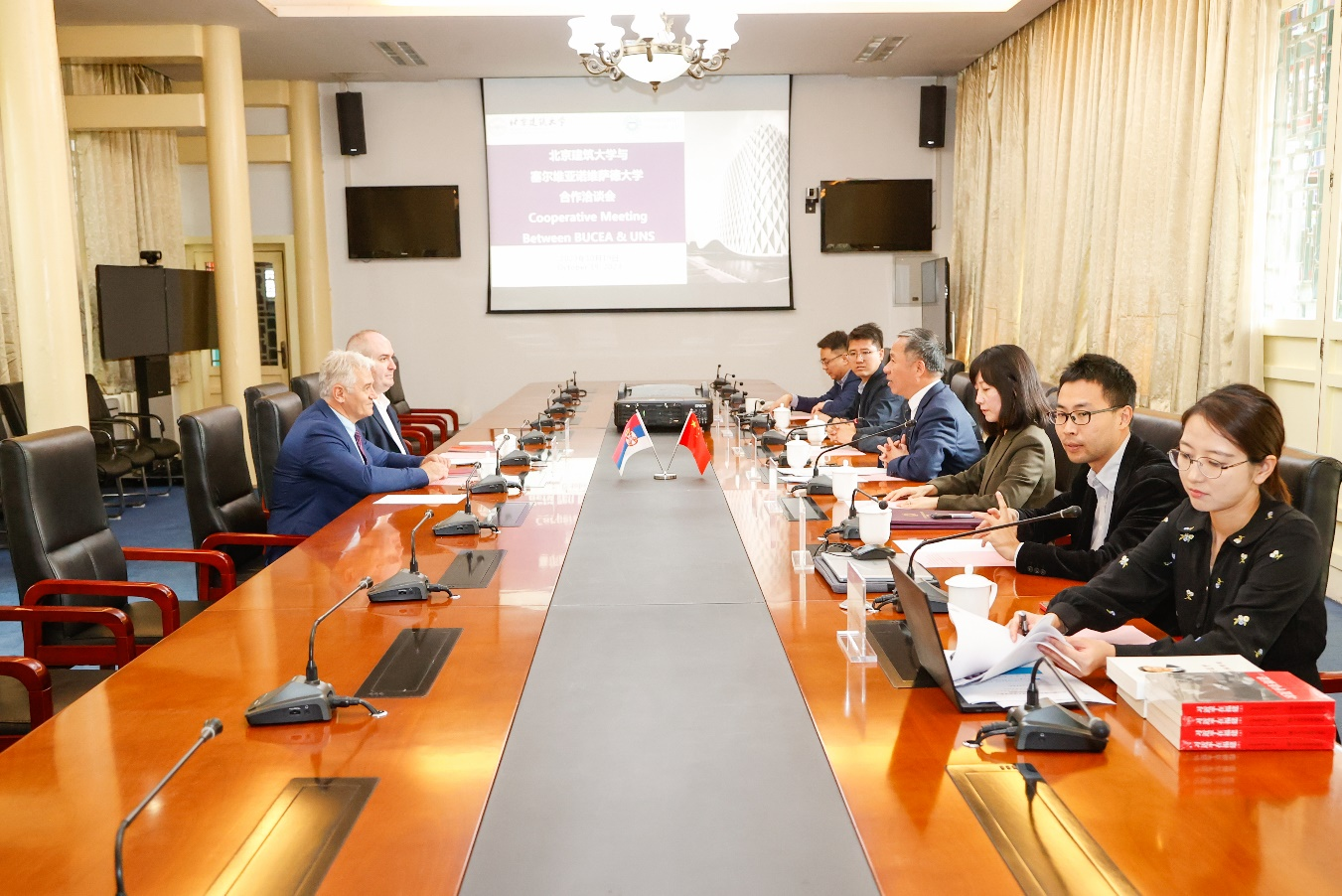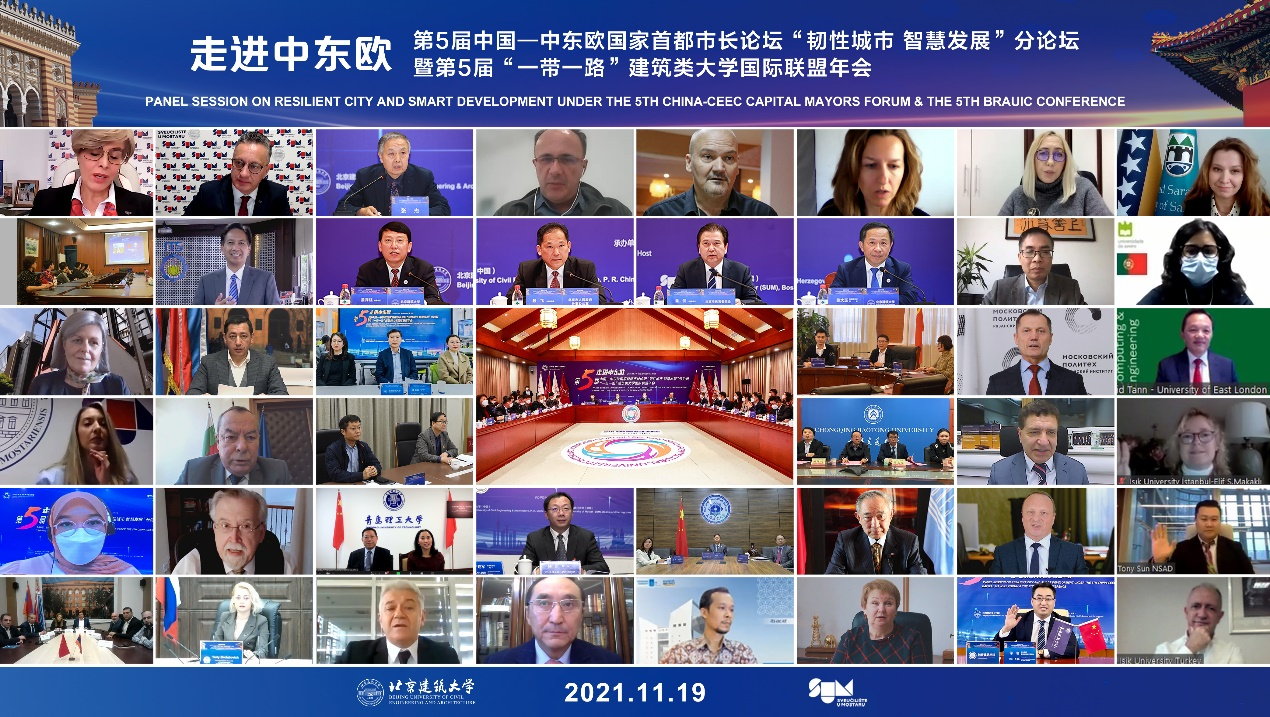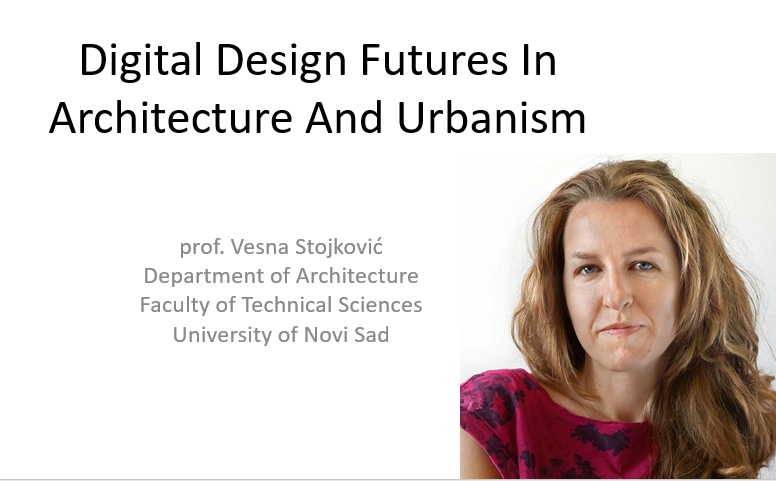
From October 17-18, the third Belt and Road Forum for International Cooperation (BRF) was held in Beijing. In addition to the opening ceremony, the Forum also hosted three high-level forums and six thematic forums. A letter of intent on the Beijing International Innovation Center for Architectural Heritage Protection and Development in the Belt and Road Region initiated by Beijing University of Civil Engineering and Architecture (BUCEA), was signed at the thematic forum on sub-national cooperation. This is also one of the five key projects recommended by Beijing Municipality to the BRF. The thematic forum was jointly organized by the Chinese People’s Association for Friendship with Foreign Countries and the People’s Government of Beijing Municipality. Government officials from 34 countries and 43 provinces and cities, as well as representatives from 19 friendly organizations, attended the forum. Focusing on the theme “Sub-national Cooperation for Common Development”, the participants had friendly and in-depth discussions and reached a broad consensus on conducting friendly exchanges and mutually beneficial cooperation among local governments under the Belt and Road Initiative (BRI) as well as global development issues of common interest.
Prof. ZHANG Dayu, President of BUCEA, and Prof. Dejan MADIĆ, Rector of the University of Novi Sad, Serbia (UNS), successfully signed a cooperation letter of intent on the Beijing International Innovation Center for Architectural Heritage Protection and Development in the Belt and Road Region at the thematic forum. The Center will open up in-depth cooperation on architectural heritage protection and sustainable development of historical cities among universities, international academic organizations, enterprises and other entities from countries and regions along the Belt and Road. Both sides agreed to bring together their technical and resource advantages in architectural heritage conservation, sustainable development and protection of historical cities, and high-level talent cultivation to yield world-class research results related to low-carbon co-existence technologies of architectural heritage and historical cities, and to build the Center into an internationally renowned academic platform, a talent cultivation highland, and an industry-education-research integrated development base of other related disciplines, so as to promote high-level international exchanges and international talent cultivation of the capital city.

On October 19th, the presidents of the two sides held an offline formal meeting to communicate on the promotion of the Belt and Road Architectural University International Consortium (BRAUIC), the in-depth cooperation between the two universities, and the next step of the development of the Center. A unanimous agreement was reached to utilize the platform of BRAUIC and the Center as a critical window for cooperation in order to promote in-depth cooperation among various parties in the field of architectural heritage protection and sustainable development of historical cities through student training programs, joint application for research projects and academic conferences, professional training, technology services and output.




UNS joined the BRAUIC in 2019 and signied an inter-university cooperation agreement with BUCEA in 2020.

In August 2020, UNS students led by Associate Prof. Marko VILOTIĆ at UNS Faculty of Technical Sciences, together with 309 teachers and students of 12 universities from 14 countries, attended the international summer school organized by BUCEA.

Associate Prof. Marko VILOTIĆ from UNS speaking as the BUCEA summer school teacher representative in August 2020

LAZOVIC, a postgraduate student from UNS, serving as a student leader at the BUCEA summer school in August 2020
In December 2020, the project “Ecological Environment Monitoring to Urban Areas along China-Europe Railway Based on Remote Sensing and Artificial Intelligence” jointly applied by the two universities was awarded the priority funding of the “2020 China-CEEC Joint Education Project of Institutions of Higher Education”.

Certificate for receiving priority funding of the “2020 China-CEEC Joint Education Project of Institutions of Higher Education”
In November 2021, BRAUIC designated UNS as the Chairman of the CEE Region, with Rector Prof. Dejan MADIĆ being the Regional Chairman. UNS is responsible for assisting BUCEA, the Chair, in BRAUIC’s development planning and implementation of various events in the CEE region.


Prof. Vesna STOJAKOVIĆ from UNS being invited to make a keynote speech
In February and November 2022, both parties jointly organized thematic academic seminars, published four academic papers (one indexed in SCI, three indexed in EI), and launched the preparations for the Center.


Project Status Update Meeting of China-CEEC Joint Education Project of Institutions of Higher Education between BUCEA and UNS
In recent years, BUCEA has actively integrated into the practice of building the Belt and Road. It has initially established the Belt and Road International Urban Innovation Center and seven international innovation cooperation platforms, as well as built cooperation ties and strategic partnerships with 110 universities and research institutions from 45 countries and regions. In 2017, BUCEA launched the BRAUIC, which has been joint by 74 institutions from 28 countries. Through continuously building brand activities for international talent cultivation and expanding the “circle of friends” at home and abroad, it has deepened the exchanges and cooperation among universities in countries and regions along the Belt and Road, and set up a platform for international talent cultivation, collaborative scientific and technological innovation as well as cultural exchanges.
Based on the BRAUIC and multiple joint innovation centers, BUCEA has pooled technical and resource advantages in architectural heritage protection and sustainable development of historical cities. It has declared to build a joint laboratory of the Ministry of Education for International Cooperation with Politecnico di Milano, Italy, a BRAUIC member. In addition, BUCEA has cooperated with international organizations and renowned enterprises, such as ISPRS, G-Global International Secretariat, Kazakhstan, China Soong Ching Ling Foundation, China Silk Road Group Ltd., Glodon, and has jointly organized college students’ design competitions and established the International Talent Cultivation Base of Digital Architecture Platform Industry-Education-Research Integration to build an open cooperation platform on all fronts.
The initiation of the Beijing International Innovation Center for Architectural Heritage Protection and Development in the Belt and Road Region is another important move of BUCEA for proactively serving China’s Belt and Road Initiative and promoting scientific and technological cooperation and talent cultivation in the protection and innovative development of architectural heritage.
This year marks the opening year of comprehensively implementing the spirit of the 20th CPC National Congress and the 10th anniversary of the BRI. The signing for the establishment of the Center by BUCEA and UNS is a good demonstration that BUCEA’s international development is in line with the new development pattern proposed by the CPC Central Committee of accelerating efforts to foster the domestic economy and features positive interplay between domestic and international economic flows. Focusing on serving the construction of the Beijing “international exchange center” function, BUCEA adheres to the BRI and the vision of a community with a shared future for mankind, draws on the characteristic architectural disciplines of the university, and gathers resources of international industry-education-research cooperation to facilitate the university’s development in great strides, promote educational, scientific, and technological exchanges between countries and regions involved in the BRI, and serve the high-quality development and high-level opening up of the capital city so as to demonstrate to the world the fruitful outcomes achieved in the past decade of the BRI.
Being held on October 17-18 in Beijing, the Third Belt and Road Forum for International Cooperation was attended by representatives from 151 countries and 41 international organizations. During the Forum, 458 deliverables were yielded, surpassing the number from the second BRF by a significant margin. These include important cooperative initiatives and institutional arrangements such as the “Beijing Initiative for Deepening Cooperation on Connectivity”, the “Beijing Initiative for Belt and Road Green Development”, the “Beijing Initiative on the Belt and Road International Digital Economy Cooperation”, the “High-Level Principles on Belt and Road Integrity Building”, and the Green Investment and Finance Partnership (GIFP). Specific targets were also set, such as providing 100,000 green development training opportunities for partner countries by 2030 and expanding the number of joint laboratories to 100.